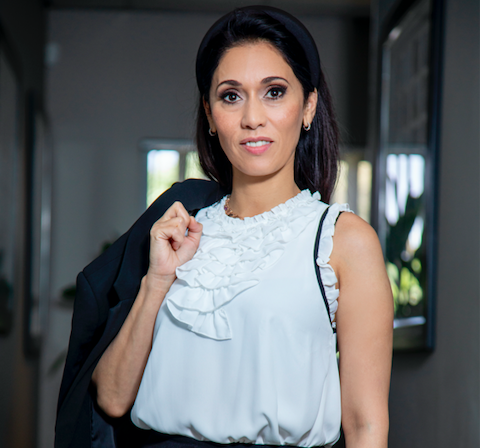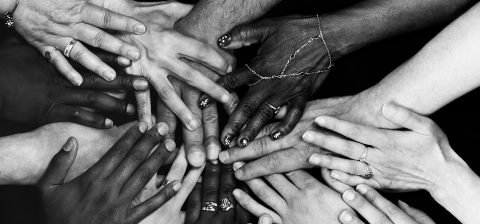Financial Mail Women
Gender Intelligence
If gender diversity pertains to bringing more women into boardrooms, gender intelligence is about making sure that women (and their male counterparts) are adept at working together to solve problems and create more robust organisations.
This is the understanding that Business Engage and Rand Merchant Bank hoped to foster through the second Corporate Gender Intelligence Conference, hosted earlier this year.
“Business Engage defines corporate gender intelligence as ‘the aptitude of an organisation to acknowledge the business case for gender mainstreaming and the ability to apply the necessary knowledge, skills and processes to harness such qualities,’” explains the organisation’s CE Colleen Larsen. She points out that South African companies are getting at least some of this right: Business Engage’s research, as reported in its Status of Gender on JSE Listed Boards, shows that local organisations are starting to think seriously about gender balance. And why wouldn’t they, given that the benefits of gender diversity – including enhanced competitiveness – are well documented.
More difficult, though, is what Larsen calls “acquire and apply”. “Understanding that you need to take action is one thing; implementing a plan of attack quite another,” she says. “This requires a concerted effort, which involves enlightened leadership, group buy-in, expenditure of resources (sometimes at the expense of other critical resources), and a whole lot of energy.”
It all starts with having the right conversations because inclusivity is impossible without dialogue. This is one of the key messages conveyed at this year’s conference where speakers included Cecilia Akintomide, chairperson of the Sanitation and Hygiene Fund, talking about gender mainstreaming and sustainability in Africa; Helen Nicholson, CEO and founder of The Networking Company, discussing mindfulness; and Catherine Musakali, an advocate of the High Court in Kenya and chair of The Women on Boards Network, explaining the link between sustainability and corporate governance. Also on the agenda was an exploration of authenticity, delivered by Kearney senior advisor Jo-Ann Pohl while Dr Nik Eberl and Yathin Soni of The LinkedIn Dealmaker shed light on building a personal brand online. Mountaineer Deshun Deysel Bester, CEO of GoPeak International, spoke about personal strategy; Beth Rivett-Carnac, transactor: sustainability and ESG advisory at Rand Merchant Bank, invited delegates to consider finance through a gender lens; and Flux Trends’ Bronwyn Williams provided insight into the future of work in a post-pandemic world.
Sustainability through a gender lens
Musakali believes that gender parity is an integral part of the pillars of sustainability: environment, society
and governance (ESG).
Take the environment, for example, which may be impacted by the actions of either gender. Any policies aiming to protect the environment must take both genders into account.
The same applies to the social pillar. “Gender is a particularly pertinent consideration here, as we are far from achieving gender parity in institutions,” says Musakali. She advises that organisations must adopt a gender lens when putting in place policies, processes and programmes that ensure safe working conditions, employee health and wellbeing, fair pay, safeguarding, diversity and inclusion, CSR/CSI programmes, and equity and equality programmes.
Governance, meanwhile, relates to the pillars of governance that not only include purpose, values, policies, procedures and other governance structures (including decision-making), but also board composition and diversity. This has long been an issue for proponents of gender inclusiveness. The case for gender diversity on boards has already been made clear; what is important now, according to Musakali, is turning attention to other issues related to gender diversity. It’s not enough simply to set targets in this regard; companies should also be clear on the action that will be taken if they fail to meet these goals, and they should then make this information widely available to all stakeholders so that they can be held accountable for monitoring any progress and remedying failures.
Musakali maintains that if gender mainstreaming is to become a reality, men need to be as much a part of the conversation as women. “This is about inclusion, after all. We will not achieve buy-in by imposing policies. Trying to swing the pendulum in the opposite direction will only result in resistance and create yet another imbalance. Rather, we need to leverage typical masculine strengths – including men’s ability to champion a cause they believe in, and their determination to succeed – to move from conversation to action,” she says.
Moving mountains
Bester is fond of remembering her first Everest expedition: “I always say that 26 years ago, I celebrated turning 26 at the peak of the world’s highest mountain.”
Many more women have joined the mountain climbing community since those days, she notes, and yet they continue to face similar challenges to their mothers and grandmothers in the office.
Her advice? “If I were to apply a mountain climbing analogy, I would say that it’s important for women in corporates to plot their mountain and visualise what it will take to reach their summit. Just as we have to reach Base Camp One, then Two and Three when we’re climbing a peak, we have to map our goals,” Bester says.
She notes that when you’re about to reach a summit, gender makes little difference – each person, whether male or female, is carrying the same equipment and facing the same challenge. That’s not to say that everyone climbs the same way, though. “I am often told that I climb ‘like a woman’ – and it’s true, men and women do tackle peaks differently. Men tend to be very results-driven. They don’t necessarily think about what happens between two points – they’re more focused on reaching that peak. Women, on the other hand, pay attention to the process itself – they think about what they are experiencing, look at the colour of the sky, note the pain they feel.” This tendency may be perceived as a weakness in male-dominated contexts – but the reality is that the rules and behaviours that are welcomed in such contexts don’t necessarily come naturally to women.
We can’t forget that the modern-day organisation was modelled around the military, Bester points out – a very male domain indeed. “The good news is that our current world is all about change. With technology coming to the fore, we have a very real opportunity to build empathy into our experiences in the workplace. Digitisation may prove to be the enabler that levels the playing fields.”
Brave new world?
One of the most striking trends to emerge out of the COVID-19 pandemic sees young people deciding to opt out
of a system that doesn’t work for them. So says Bronwyn Williams of Flux Trends, noting that this pattern has
evolved as people who should have been starting on the career ladder failed to gain entry into the corporate world. Rather than playing catch-up with their more fortunate peers, they are saying no to an economic system that has failed to accommodate them.
This disaffection is affecting the employed, too, as demonstrated by The Great Resignation: having had ample time to examine their priorities during lockdown, a vast number of people the world over are choosing to spend less time at work and more time pursuing their passions. This is strongly linked to issues around mental health: stress is no longer viewed as an inevitable part of a job. Obviously, all of this is having a significant impact at a macro level. If no one goes to work, economic slowdown cannot be avoided.
Another issue with far-reaching consequences is that remote work means that staffers are less engaged
than ever before. Although online meetings may make for greater efficiency, they remove those chance coincidences that often lead to innovations.
The solution? “If there is one learning we can take out of this, it’s that human relationships are paramount – as is investing in them,” Willliams concludes.
All about the brand
In a world where your meeting is as likely to take place digitally as in a physical boardroom, your online presentation is paramount. Eberl and Soni of The DealMaker System point out that this is even more true given that online content engagement has doubled over the past 12 months. “In this digital economy, it’s not what you know that counts. Rather, it’s how you show up online,” states Eberl.
Soni agrees: “Along with content engagement, online noise has also doubled. This means that you have to try harder to stand out in the digital environment.”
This is where executive branding has a critical role to play. Central to this is the LinkedIn profile because, as Eberl informs, 92 per cent of all senior decision-makers are on LinkedIn – which means that your profile is certain to be viewed by the right people.
How to ensure that your profile stands out? “It’s about leading with value. The minute someone takes time to read your profile, they have already invested with you – so you need to make that investment worthwhile,” Soni says.
He adds that your profile should be structured as a story, rather than a resumé. “Most profiles are egocentric, listing the individual’s experience and accomplishments. Bearing in mind that your goal is to add value for the client, tell your story with an eye to how it may encourage the reader to connect with you,” Soni advises.
“Remember that one of the first things people do after meeting you is Google your name. If your LinkedIn profile is complete, this is the first item shown in the search, which is why everything, from your profile pic to the 30-second animated intro – needs to be on point,” Eberl says






 Sign-up and receive the Business Media MAGS newsletter OR SA Mining newsletter straight to your inbox.
Sign-up and receive the Business Media MAGS newsletter OR SA Mining newsletter straight to your inbox.